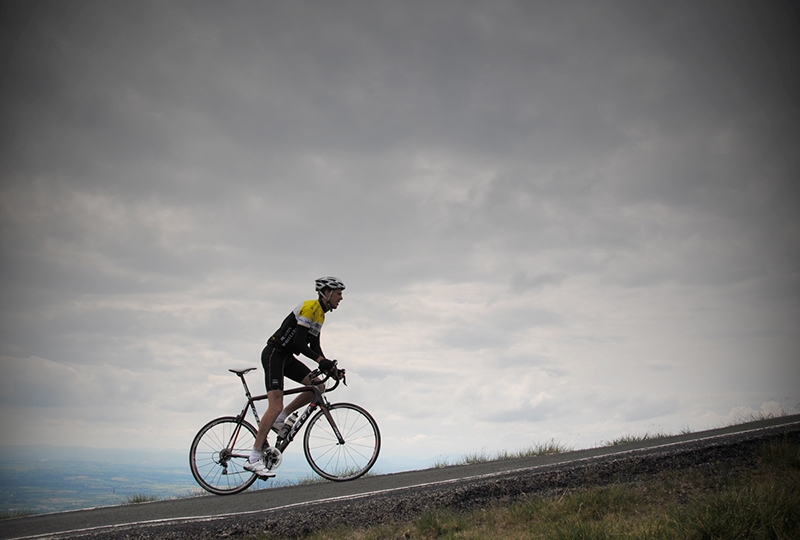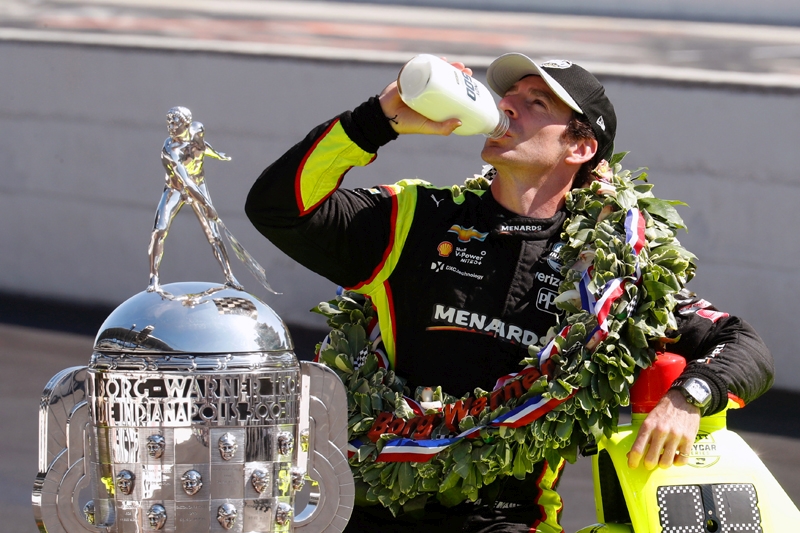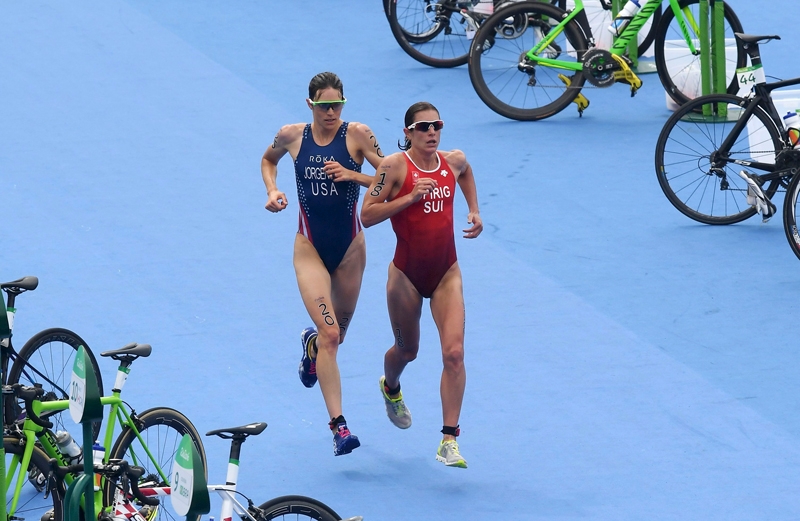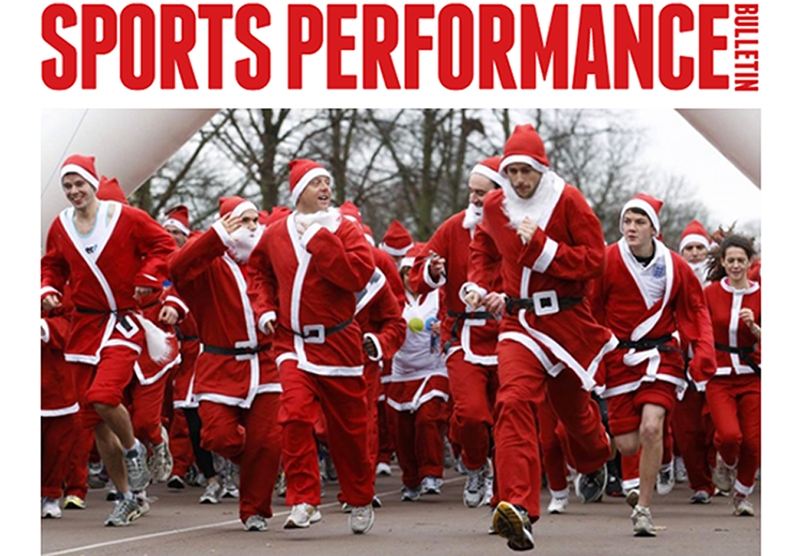Polarised training: is it better than the Goldilocks approach?
In recent years, the concept of polarised training has become increasingly popular. Andrew Hamilton explains what it is and why new evidence shows that taking a polarised approach to your training could be the key to a PB next season...
When it comes to planning a training programme, there are three key variables: training duration, training frequency and training intensity. Over recent years, a growing body of evidence has been accumulating that once you’ve reached a good base level of fitness, the way you manipulate your training intensity is the key to making further progress.Once upon a time
In the past, the most popular approach to building endurance fitness was to firstly build up the long, slow (purely aerobic) training sessions and then to add in progressively faster sessions. The reasoning behind this approach was that in a race situation, the maximum sustainable pace of a runner, cyclist, rower etc would be largely determined by their ability to clear lactate from the working muscles.Lactate is a natural substance produced in muscles when the energy demands become very high; if there’s not enough oxygen available to meet that energy demand (through the aerobic system), some muscle carbohydrate is broken down in the absence of oxygen. Although this temporarily boosts energy supply, it also results in lactate accumulation in the muscles, which then results in that burning, fatiguing sensation you’ve probably experienced during very intense exercise. And once blood lactate concentrations exceed around 4mM/L (millimoles per litre – a measure of concentration), the fatigue is such that you are forced to slow down dramatically.
In terms of building maximum sustainable pace then, the logic was that by training at or near ‘lactate threshold’ (the point at which lactate in working muscles starts to rapidly accumulate), you could train the muscles to a) process oxygen more efficiently and so reduce the amount of lactate produced, b) train the muscles to function more efficiently in the presence of lactate (ie become more tolerant to lactate) and c) to clear the lactate that had been produced more rapidly. The net result of these three changes is that an endurance athlete can work harder for longer.
The lactate threshold training approach
There’s no doubt that training at or near your lactate threshold (often referred to as threshold training) improves endurance performance, particularly in untrained participants or those who are relatively new to training(1,2). For this reason, if you progress from purely long, slow distance work (ie purely aerobic) to a combination of aerobic and threshold training, you will make gains in your endurance fitness. Hardly surprising then that if you were to take a random sample of sportsmen and women and look at the distribution of training intensities, you’ll typically find that a large proportion performed at more gentle aerobic pace with a smaller proportion at a harder intensity, at or near to lactate threshold.Intuitively, this kind of ‘Goldilocks’ approach – ie training hard enough to push your body out of its comfort zone into the lactate threshold zone in order to promote gains in your swimming/cycling/running etc endurance, but not training so hard as to exhaust yourself, seems eminently sensible. The problem is however that when you look at the scientific evidence to support this approach to training, you soon discover that this might not be the best way.
The problem with threshold training
There’s no doubt that threshold training can improve endurance fitness; the big question mark is that if you look at studies into the performance of elite athletes and the distribution of training intensities typically used, you discover that spending time training at or close to lactate threshold may not only be ineffective in increasing performance, it might actually be counterproductive(3,4)!Indeed, a retrospective analysis of the intensity, duration and frequency of the training loads of successful international-level cross-country skiers(5), rowers(6), cyclists(7), and runners(8) shows that elite endurance athletes typically complete most (around 75% of total training volume) of their yearly training sessions at intensities well below lactate threshold – ie in the purely aerobic zone. Nothing remarkable about that you may think, until you consider that around 15-20% of the remaining training volume was completed not at or near lactate threshold, but well above it. This means that only around 5-10% of total training volume in these elite athletes was spent doing threshold work.
Polarised training intensity distribution
This kind of training intensity distribution with the bulk of the work done at low (purely aerobic) intensity, a good chunk done at very high intensity and only a small amount at or near to lactate threshold has been dubbed ‘polarised’ training – see box 1. The polarised approach to training says that moderate-hard intensity training – ie near to your lactate threshold - is rather unproductive for making fitness gains. Instead, it says that endurance athletes would be better to spend a large proportion of their training time working at low intensity (ie in the ‘easy’ purely aerobic zone) and a smaller proportion at a very high intensity (near maximum power output) but with very little time spent training at or near to lactate threshold.The thinking is that polarised training provides an excellent ‘aerobic foundation’ yet allows for high-intensity work that really stimulates training adaptation without becoming too tired. The conventional ‘middle of the road’ approach however means that you could spend much of your time training hard enough to tire you out and never leave you feeling really fresh but never hard enough to provide the training stimulus your muscles need to make maximum fitness gains.
Box 1: Polarised training theory
TABLE 1 THE THREE TRAINING ZONES
| Zone | Sometimes known as: | Subjective feel: | Typical blood lactate | Typical heart rate | Energy system(s) used |
|---|---|---|---|---|---|
| 1 | ‘Aerobic', ‘easy', ‘recovery', ‘long slow distance' etc | Easy – you feel like you can keep going and going | Less than 2mmol per litre (mM/L) | Under 80% and typically around 70-75% of maximum | Aerobic system (duration = hours - to the far right of the graph in figure 1) |
| 2 | ‘Threshold training', ‘intensive endurance' etc | Moderately hard to hard (you know you've had a workout) | Between 2 and 4mmol per litre (mM/L) | Around 80-85% of maximum | Aerobic system with a significant input from the lactate system (duration = minutes - the middle of the graph) |
| 3 | ‘Very high intensity', ‘race pace' etc | Very, very hard (you won't want to stay in this zone for long!) | More than 4mmol per litre (mM/L) | Significantly over 85% of maximum | Lactate system with some input from the CP system - for example during a flat out sprint to the finish line (towards the left of the graph) |
The polarised theory of training uses the concept of ‘intensity zones’. Basically, this concept assigns your time spent training into three zones - 1, 2 and 3 - which refer to easy, moderately hard and extremely hard intensities of training respectively (see below). What’s fascinating is that studies on elite athletes such as runners and rowers suggest that the best way of achieving your maximum endurance potential is to spend the bulk of your training time in zone 1, ensure you spend at least some time in zone 3 but not to spend too much time in zone 2 (the moderately hard zone).
Follow the elites
The early evidence for the benefits of polarised training tended to be rather anecdotal; as we’ve seen above, sports scientists noticed that many of the very best-performing endurance athletes seemed to perform the bulk of their training at an easy intensity but with combined with some extremely high-intensity work too. By contrast, lactate threshold training didn’t seem to feature in most elites’ programmes. But an association doesn’t necessarily mean a cause, so in recent years, scientists have been investigating this subject more rigorously. And what is emerging is that the ubiquitous use of a polarised approach is among elites is no coincidence, because it really does seem to offer performance benefits.For example, a 2012 study by Scottish scientists looked at cyclists who completed two blocks of 6-week endurance training periods with similar total training volumes but with differing intensity distributions(9).
Twelve cyclists each completed two blocks of 6-week endurance training periods whose total volumes were similar but with differing intensity distributions. These two blocks consisted of:
- A polarised block, averaging 6.4 hours per week spending 80%, 0% and 20% of training time in low, moderate and high intensity zones respectively;
- A much more middle of the road (threshold training) block, averaging 7.5 hours per week spending 57%, 43% and 0% of training time in low, moderate and high intensity zones respectively.
As you might expect from a block of structured training, both training periods produced gains in training adaptation within the muscles, endurance performance, peak power output, lactate threshold and high-intensity exercise capacity. However, closer inspection of the figures showed that the polarised training regime had produced greater gains. In particular, the improvement percentages in polarised vs. threshold training were as follows: peak power output – 8% vs. 3%; high-intensity exercise capacity - 85% vs. 37%; power output at lactate threshold – 9% vs. 2%.
Speed skating
Meanwhile, studies on the training intensity distributions used by speed skaters provide convincing evidence that the more polarised the approach (with the bulk of the training emphasis on the easy aerobic intensity) the better the performance. In a 2012 study, researchers examined the effectiveness of threshold versus polarised training distributions in the training organisation of Chinese top-level sprint speed skaters over a 2-year period from 2004-2006(10). Data from nine members of the Chinese national speed-skating team were gathered including:- Each season’s total training load and training frequency;
- Training intensities of each session (measured by ear blood lactate and/or estimated by heart rate);
- Performances at each national, World Cup, and Olympic competitions during the two seasons, as well as lactate data measured 15 and 30 min after these competitions.
And as if to underline the importance of zone-1 training, a study published earlier this year looked at the training-intensity distribution and training hours of successful Olympic speed skaters over 10 Olympiads(11). To do this, Olympic-medal-winning trainers, coaches and speed skaters were interviewed and their training programs were analysed. Each program was quantified in terms of training intensity (zone 1, zone 2 or zone 3) and the net training times in each zone calculated.
The key finding was that a strong positive linear relation was found between training distribution in zone 1 and Olympic times. In plain English – the greater the proportion of time spent in zone 1, the better the performance. Surprisingly, there was no relationship found between total training hours, and time! However, the researchers concluded that their data demonstrated convincingly that over the last 38 years, there’s been a shift toward a polarised training approach and this shift seems to be the most important factor in the development of Olympic speed skaters’ performances.
A comparative study
The above results also tie in neatly with those from a comprehensive and newly published study on triathletes, cyclists, runners and cross-country skiers(12). However, unlike previous studies, this one compared four different training approaches carried out over a 9-week period to see which produced the greatest gains in key measures of endurance performance. The four training interventions were as follows:- High-volume training (ie large amounts of zone 1);
- Lactate threshold-training (ie relatively large amounts of zone 2);
- High-intensity interval training (ie emphasising lots of high-intensity interval sessions, each consisting of a 20-minute warm up at 75% of max heart rate, 4 sets of × 4 minutes at 90–95% of max heart rate with 3 minutes of active recovery followed by a15-minute cool down;
- Polarised training (ie emphasising zone 1 with some zone 3 training but little zone 2 training)
Figure 1: A study of four training interventions(12)

In the figure above:
- A = high-volume training, B = threshold training, C = polarised training and D = high-intensity interval training (HIIT).
- LOW = low training intensity (under 2 mM/L); LT = training intensity around lactate threshold (around 4mM/L); HIGH = high intensity (above 4mM/L).
- FL = fartlek-type training, R = recovery day.
- Numbers show numbers of each session type per week, except in case of HIIT, where they show total number of sessions.
The results showed that while the high-intensity intervals produced good gains, it was the polarised training that resulted in the greatest improvements (see figure 2). The polarised training block produced gains in aerobic capacity of over double that of high-intensity intervals. When the researchers measured the maximum speed that could be maintained at a blood lactate level of 4mM/L (lactate threshold – the kind of conditions faced during a race), the high-intensity intervals produced good gains but again it was the polarised approached that produced the greatest gains.
Figure 2: Endurance performance gains after four different training modes


NB: maximum speed at lactate threshold is a good determinant of race performance
Interestingly, both the lactate threshold and high volume (mainly low-intensity work with very little high-intensity training) approaches failed to produce any further improvement in endurance – particularly noteworthy because this is how many endurance athletes actually train! The fact that training at or near lactate threshold produces very limited gains in maximum speed the athletes could sustain at lactate threshold is also very surprising because it seems to defy one of the key principles of fitness training – specificity. Training specificity says that to improve your ability to perform a physical task, you should train in a way that most closely replicates the demands of that task. However, you can’t argue with empirical data and these results most definitely suggest that lactate threshold training is NOT an efficient way to train if increasing your maximum speed at lactate threshold (ie to race better) is your goal!
An explanation
An in-depth explanation as to why this might be the case is beyond the scope of this article. Suffice to say that new research by molecular biologists suggests that very intense exercise – ie zone 3 – is able to significantly change the biochemistry of muscle cells in quite profound ways, specifically by activating ‘endurance genes’ in your muscles, boosting their activity. However, this activation is most effective when there’s a good aerobic base in place – ie as a result of lots of zone-1 training. Combining these two modes – ie polarised training – seems then to provide the best of both worlds. By contrast, zone-2 training seems to offer the worst of both worlds; it’s not intense enough to properly stimulate the activity of the endurance genes in the muscles but (to make matters worse), is still intense enough to produce accumulated fatigue and delayed recovery (unlike zone-1 training where the body remains relative unstressed and recovery is relatively rapid). The bottom line is that an athlete who spends lots of time in zone 2 is likely to feel tired, struggle to recover and make only limited gains in endurance performance.Summary and recommendations
There’s a growing body of convincing evidence from a wide range of sports that a polarised approach to training is optimum for maximising gains in endurance performance. With this in mind (and providing there’s a good endurance base already in place), endurance athletes should ensure the bulk of their training time is spent in zone 1; while spending at least some time each week in zone 3 (for example performing high-intensity intervals. Conversely, they should minimise their time spent in zone 2 (it should be much less than zone 3). It’s also worth emphasising that athletes should ensure they’re fresh and fully recovered before tackling a zone-3 workout!References
- Int. J. Sports Med. 1984; 5, 167–173
- Med. Sci. Sports Exerc. 1997; 29, 837–843
- Med.Sci.SportsExerc. 2007; 37, 496–504
- Int.J.SportsPhysiol.Perform. 2010; 5, 316–327
- Scand. J.Med.Sci.Sports 2006 16, 49–56
- Med.Sci.SportsExerc. 1998 30, 1158–1163
- Med.Sci.SportsExerc. 2002; 34, 1029–1036
- Med.Sci.SportsExerc. 2005; 37, 496–504
- J Appl Physiol. 2012 Dec 20. [Epub ahead of print]
- Int J Sports Physiol Perform. 2012 Jun;7(2):103-12
- Int J Sports Physiol Perform. 2014 Jan;9(1):93-9
- Front Physiol. 2014 Feb 4;5:33
You need to be logged in to continue reading.
Please register for limited access or take a 30-day risk-free trial of Sports Performance Bulletin to experience the full benefits of a subscription. TAKE A RISK-FREE TRIAL
TAKE A RISK-FREE TRIAL
Newsletter Sign Up
Testimonials
Dr. Alexandra Fandetti-Robin, Back & Body Chiropractic
Elspeth Cowell MSCh DpodM SRCh HCPC reg
William Hunter, Nuffield Health
Newsletter Sign Up
Coaches Testimonials
Dr. Alexandra Fandetti-Robin, Back & Body Chiropractic
Elspeth Cowell MSCh DpodM SRCh HCPC reg
William Hunter, Nuffield Health
Keep up with latest sports science research and apply it to maximize performance
Today you have the chance to join a group of athletes, and sports coaches/trainers who all have something special in common...
They use the latest research to improve performance for themselves and their clients - both athletes and sports teams - with help from global specialists in the fields of sports science, sports medicine and sports psychology.
They do this by reading Sports Performance Bulletin, an easy-to-digest but serious-minded journal dedicated to high performance sports. SPB offers a wealth of information and insight into the latest research, in an easily-accessible and understood format, along with a wealth of practical recommendations.
*includes 3 coaching manuals
Get Inspired
All the latest techniques and approaches
Sports Performance Bulletin helps dedicated endurance athletes improve their performance. Sense-checking the latest sports science research, and sourcing evidence and case studies to support findings, Sports Performance Bulletin turns proven insights into easily digestible practical advice. Supporting athletes, coaches and professionals who wish to ensure their guidance and programmes are kept right up to date and based on credible science.










